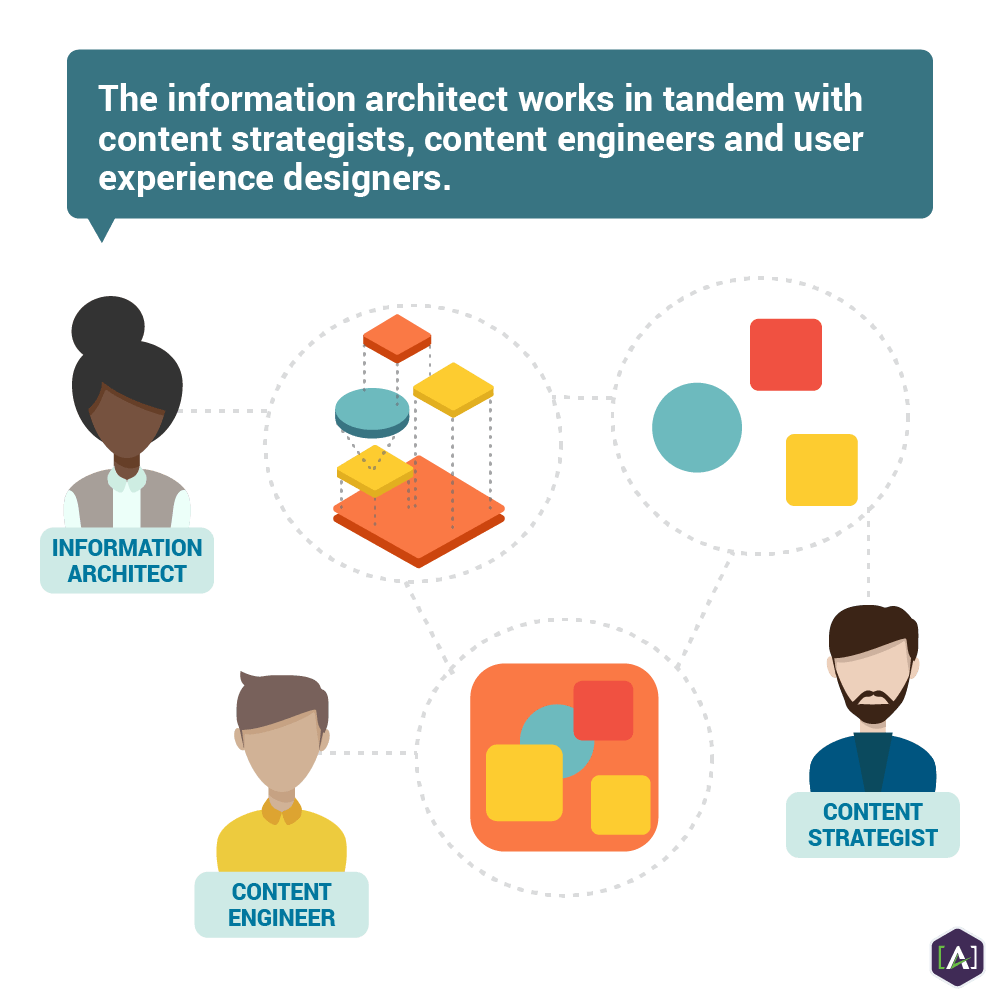Information architecture (IA) impacts user experience
In website design, web and mobile applications, and all sorts of digital publishin – information architecture can dramatically influence the success of customer experience. IA involves organizing the structure, content, and flow of a website or application to support usability, discoverability, and effective communication. As a result, it’s sometimes difficult to understand what role information architects play. Are they designers? Developers? Managers? The truth is, they often embody a little of all of these roles and more.
Information Architecture or User Experience? Yes.
One common point of confusion is whether information architecture (IA) is the same as user experience (UX). While both disciplines ultimately help define the overall final user experience, information architects and UX designers approach tasks using different resources and with different goals in mind. Websites and other digital properties need both IA and UX.
Information architects are primarily concerned with organizing actual
information and then figuring out the best ways to serve that information up to users. They are interested in data, whether it’s about gathering it or creating it. As a result, they may work on researching and creating personas, creating
taxonomies for organizing user data, performing usability tests and structuring the flow of information for users. However, information architecture supports user experience. Structure enables message clarity and user process efficiency. So, the information architect and user experience designer work toward the same tightly interwoven outcomes.
Information Architects Are Team Players
The information architect works in tandem with content strategists, content engineers, user experience designers, and business stakeholders.

With its front-heavy focus on information and data, information architecture also serves the interests of the business as much as the customer. By focusing on organizing, labeling, and distributing information (or content), information architects help keep their content structured and organized so it can be distributed in any number of forms or platforms.
UX designers, on the other hand, are more concerned with how best to display information to users. Their interest goes beyond simple usability and focuses more on engagement and interaction. As a result, they will work closely with information architects in order to determine which information structures need to be displayed. However, they will then blend this information with creative design to craft the best user experience in order to generate results for both users and the business.
Information Architecture and Content Engineering
Content engineers shape content structure for customer experiences, while information architects shape the overall property map. This is similar to an architect working with electrical and mechanical engineers: the architecture is designing the big picture of the experience, while the engineers are working under the hood to make it real and wire it up to bring power, water, and other essential services to the final users of the building. So content engineering works in close collaboration with information architecture.
Information Architects Keep Information Fast and Agile
One important function information architects perform is helping to make the data businesses have about their users work to its maximum potential. Too many businesses rely on instinct or hunches to determine what their users want. By neglecting to collect information about their users (whether actively or passively), their marketing efforts are more shotgun rather than truly laser-focused.
Information architecture also gives businesses greater control over how their content is organized, displayed and distributed across new technologies and applications, even ones they don’t own. The structure provided by content engineers and information architects transforms static and inflexible data into agile information that can be adapted to the needs of the user, no matter where they are or where they are moving.
As new technologies, applications, and marketing platforms spring up every day, businesses need this type of information agility in order to create the best
customer experience for their users which will have a powerful impact on the bottom line.
Contact Us for a Free Consultation.